The United States stamp Scott #16, a Type IV 10-cent denomination featuring George Washington, is an essential piece in the collection of American philatelic history. This stamp, notable for its design and printing characteristics, holds distinct qualities that set it apart from other issues in the series.
Design & Print
Scott #16 is identified as a Type IV design, similar to Type II and III, except the top, bottom, or both frame lines have been recut and are much heavier in appearance.
The design of Scott #16 is intricate and ornate, showcasing a portrait of Washington in a three-quarters face pose, looking to the left. The design is set against an oval disk with a very dark ground, and a border that is white below and slightly shaded above. The upper portion of the medallion is adorned with thirteen white stars on a dark ground, above which, in a white panel, are the words “U.S. Postage” in small solid capitals, connecting two circular spaces at the corners with the Roman numeral “X.” Below the medallion, the words “ten cents” are displayed in large white capitals on a waved panel.
The entire design is encompassed by shaded scroll-work of a highly ornate character. The color of the stamp varies across a spectrum of greens, from light green to dark green, with the darker shades being more desirable.
Scott #16 was printed with wider spaces between the stamps compared to the 1-cent, 3-cent, and 5-cent values. This printing technique results in copies with less than four margins typically being sold at a discount. The paper used for Scott #16 was initially thick and opaque but became thinner and slightly transparent before the introduction of perforated stamps. It is often stained yellow or brownish by the gum.
Postal Usage
The 10-cent stamp, denoted by Scott #16, played a significant role in the postal system of the time. The 10¢ denomination was primarily used for heavier letters or those traveling long distances, as the basic letter rate was lower. This higher denomination was essential for both domestic and international mail, reflecting the diverse needs of the growing United States in the mid-19th century. The wider spacing between the stamps in printing meant that Scott #16 often has less than four margins, influencing its present-day value and rarity.
Identification
The Type IV design of Scott #16 is distinguished by the recut top, bottom, or both frame lines, which appear much heavier compared to the other types. This type is the rarest of the 1855 10 cent issues, as there were only two examples per sheet that was printed.
The uniqueness of the Type IV design make it an important subject of study for philatelists and historians. Understanding these elements is vital for accurately placing and appreciating Scott #16 within the broader narrative of American philately.

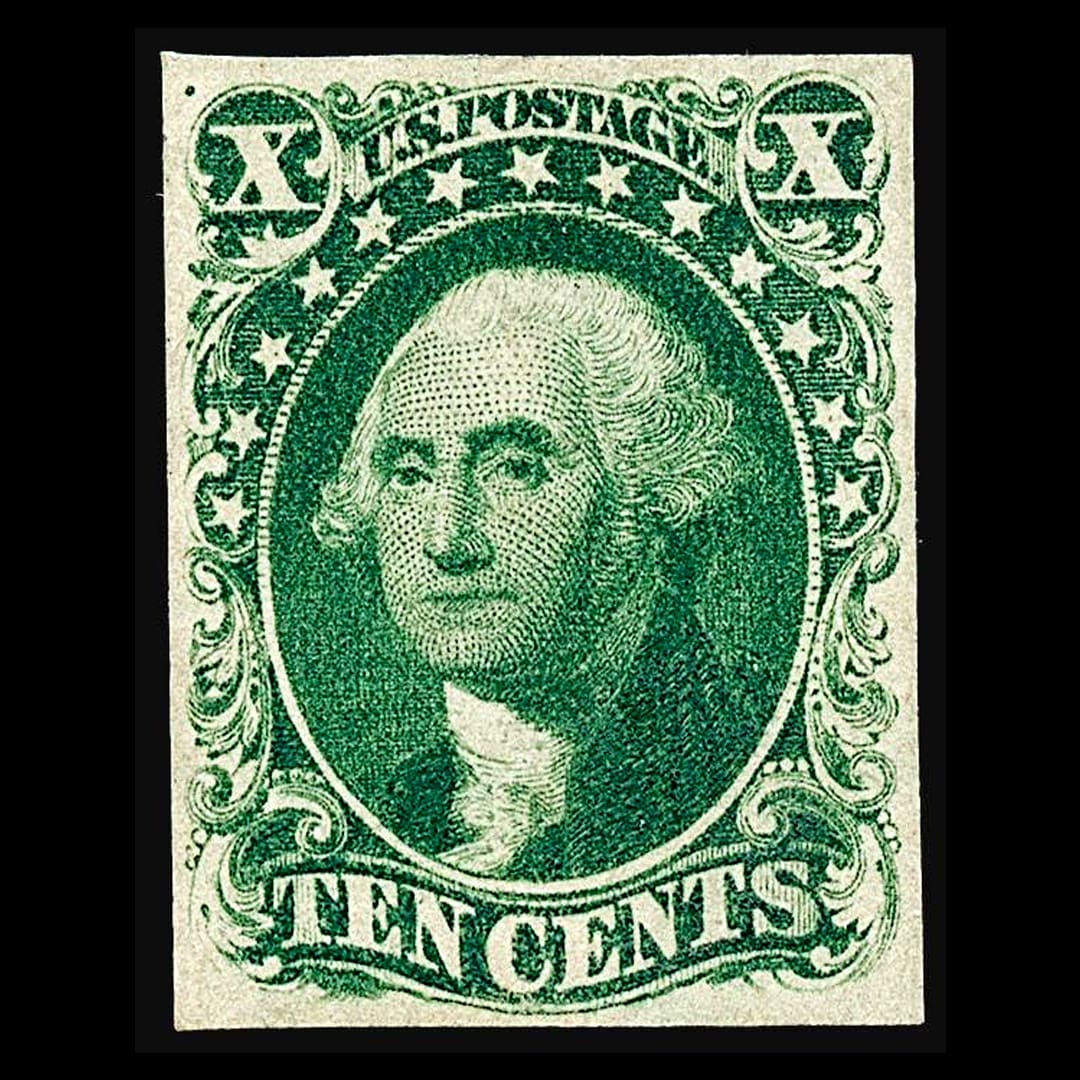

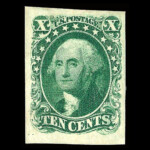
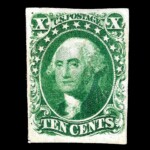

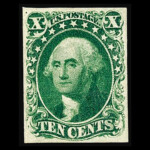
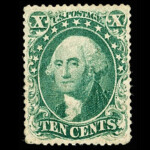

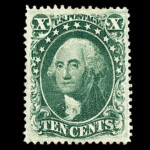
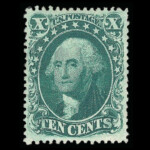
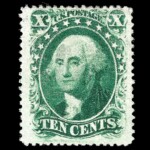
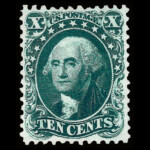
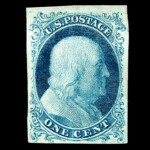
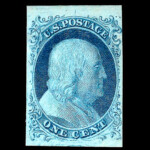
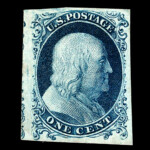
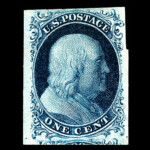
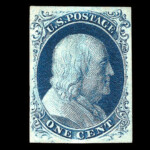
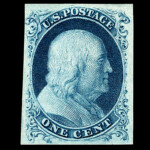
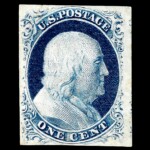

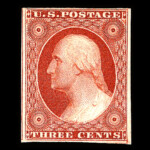
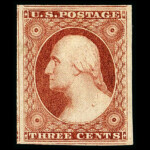
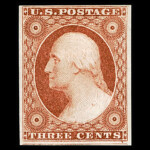
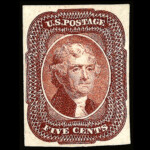
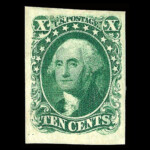
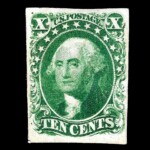
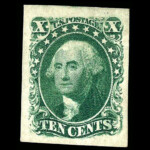
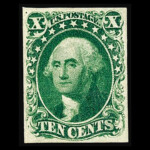
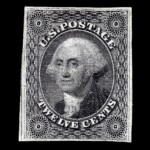









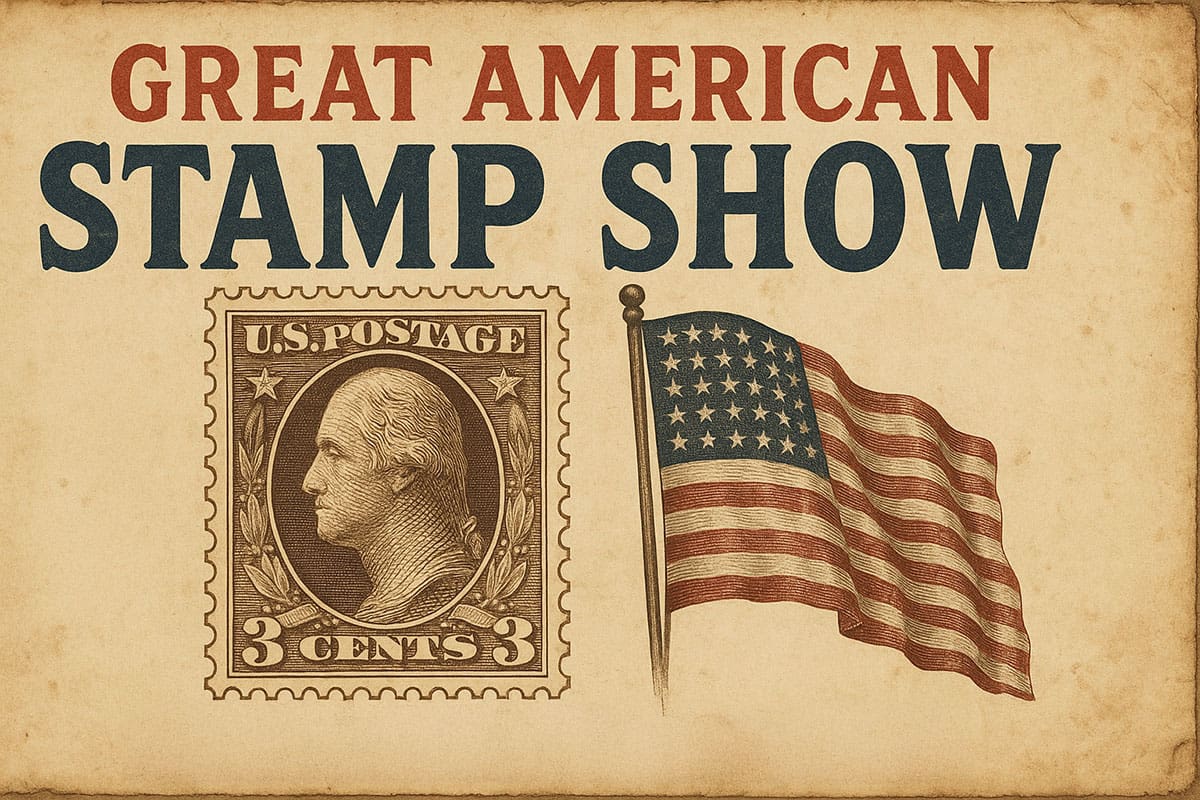


Ask A Question Or Leave A Comment